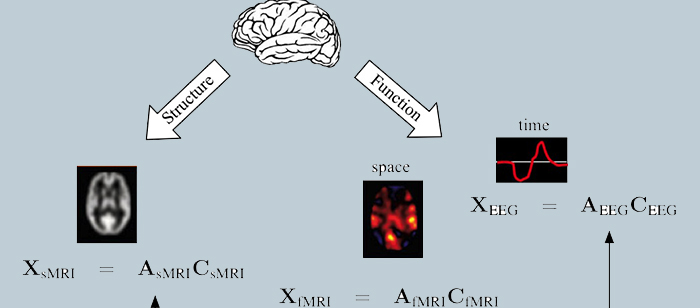
PhD Dissertation Defense
Independent Vector Analysis:
Theory, Algorithms, and Applications
Matthew Anderson
1:45pm Wednesday, 17 April 2013, ITE 325B
The field of blind source separation (BSS) is a well studied discipline within the signal processing community due to its applicability to a variety of problems when the data observation model is poorly known or difficult to model. For example, in the study of the human brain with functional magnetic resonance imaging (fMRI), a neuroimaging sensor, BSS algorithms are able to provide medical researchers and practitioners with a decomposition of a three-dimensional ‘movie’ of the brain that is amenable to analysis. BSS algorithms achieve this decomposition with only a few justifiable assumptions; this is contrary to methods based on the general linear model, which require prespecified models of the expected or desired response to achieve analysis of fMRI data.
Most BSS algorithms consider just a single dataset, but it also desirable to have methods that can analyze multiple subjects or data collections in fMRI jointly, so as to provide insights beyond that achieved with individual analysis of single datasets. Several frameworks for using BSS on multiple datasets jointly have been proposed. The subject of this dissertation is the study of one of these frameworks, which has been termed independent vector analysis (IVA). IVA is a recent extension of the classical independent component analysis (ICA) model to BSS of multiple datasets and it has been the subject of significant research interest. In this dissertation, we provide a formulation of IVA that accounts for sources which possess properties such as a) following Gaussian or non-Gaussian distributions; b) samples are independently and identically distributed (iid) or are dependent; and c) having either linear or nonlinear dependence of sources between datasets. The proposed IVA formulation utilizes the likelihood to define the objective function. This formulation admits to theoretical analysis. In particular, we provide the identification conditions, i.e., we determine when the sources can be ‘blindly’ recovered by IVA, and give a lower bound on the source separation performance.
Several algorithms exist for achieving IVA. We provide several new approaches to developing IVA algorithms and apply these approaches using a Gaussian distribution source model and a more general Kotz distribution model. The former, in addition to leading to efficient IVA algorithms, serves as the distribution model that directly connects canonical correlation analysis (CCA) and ICA.
Committee: Dr. Tulay Adali (Chair), Dr. Joel Morris, Dr. Aninyda Roy, Dr. Ronald Phlypo, and Dr. Mike Novey